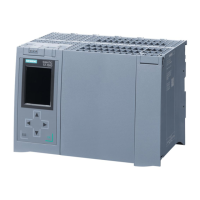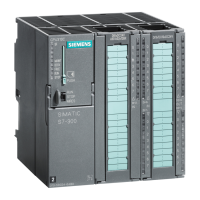Wiring
4.3 Terminal and block diagrams
CPU 1512C-1 PN (6ES7512-1CK00-0AB0)
94 Manual, 09/2016, A5E35306440-AB
The 24 V encoder signals are designated with letters A, B and N. You can connect the
following encoder types:
● Incremental encoder with signal N:
Signals A, B and N are connected using the correspondingly marked connections.
Signals A and B are the two incremental signals, phase-shifted by 90°. N is the zero mark
signal that supplies a pulse per revolution.
● Incremental encoder without signal N:
Signals A and B are connected using the correspondingly marked connections. Signals A
and B are the two incremental signals, phase-shifted by 90°.
● Pulse encoder without direction signal:
The count signal is connected to the A connection.
● Pulse encoder with direction signal:
The count signal is connected to the A connection. The direction signal is connected to
the B connection.
● Pulse encoder with up/down count signal:
The up count signal is connected to the A connection. The down count signal is
connected to the B connection.
You can connect the following encoders or sensors to the A, B and N inputs:
● Switching to P potential:
The encoder or sensor switches the A, B and N inputs to 24 V DC.
Note
External load resistance
Note that, depending on the characteristics of the signal source, effective load and height
of the si
gnal frequency, you may possibly require an external load resistance to limit the
fall time of the signal from high level to low level.
The specifications/technical data of the signal source (e.g. sensor) are decisive for the
configuration of such a load
resistance.
● Push-pull:
The encoder or sensor switches the A, B and N inputs alternately to 24 V DC and to
ground M.
Digital inputs HSC DI0 and HSC DI1
The digital inputs are logically assigned to the high-speed counters (HSC). For information
on the possible assignment of the on-board I/O inputs to the high-speed counters, refer to
table Interconnection overview of the inputs (Page 98). Up to two digital inputs are available
for each high-speed counter (HSC DI0 and HSC DI1). You can use the digital inputs for the
gate control (Gate), synchronization (Sync) and Capture functions. Alternatively, you can use
one or more digital inputs as standard digital inputs without the functions mentioned and
read the signal state of the respective digital input using the feedback interface.
Digital inputs that you do not use for high-speed counting are available for use as standard
DIs.

